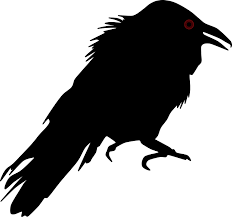Candy of a Literary Sort

In my Five-Minute Writing Tip for the October newsletter, I wanted to include a seasonal topic. Finding one came easily because merchants have been stocking the shelves with Halloween merchandise since the middle of August in anticipation of October 31. So, when you put writing and Halloween together, you get Poe’s “The Raven.”
As I read through it, I recognized some writing devices I learned in a writing class I took from editor Margie Lawson a few months ago. Lawson started off with a handout entitled “Margie’s Top 20 Rhetorical Devices.” Reading Poe’s most famous narrative poem, I noticed that he used some of these devices in a masterful way, resulting in more than just rhyme and rhythm.
Here are five rhetorical devices that makes the “The Raven” one of the best poems ever written:
- Assonance: the use of repetitive vowel sounds in successive or proximate words containing different consonants. For example, napping, tapping, rapping; turning, burning; morrow, borrow, sorrow; unbroken, token, spoken; and seeming, dreaming, streaming. Or a non-rhyming assonance like rare, radiant, maiden, and angels, where the repetition is the long “a”
- Anadiplosis: repeating the last word of one sentence or clause at the beginning of the next sentence or clause.
“From my book surcease of sorrow—sorrow for the lost Lenore.”
“And so faintly you came tapping, tapping at my chamber door,”
- Conduplicatio: starting a sentence with a word from the middle of the previous sentence.
“But, with mien of lord or lady, perched above my chamber door—
Perched upon a bust of Pallas just above my chamber door . . .”
“Ever yet was blessed with seeing the bird above his chamber door . . .”
Bird or beast upon the sculptured bust above his chamber door.”
- Oxymoron: a two-worded paradox that can be a powerful device, which adds punch to writing.
“Thrilled me—filled me with fantastic terrors never felt before.”
“Fantastic” wouldn’t usually be used to modify “terrors,” but Poe did it with aplomb.
- Alliteration (“The Raven” ’s hallmark): repeating similar consonant sounds. Quaint and curious; lost Lenore; flit and flutter; stopped or stayed; shorn and shaven; followed fast and followed faster; rare and radiant. Who doesn’t think of “The Raven” when they hear “weak and weary?”
On this Halloween, while your kids are sorting their Trick or Treat candy, give them a special treat: read them Edgar Allan Poe’s “The Raven.”
Do You Have a Catharsis Handy? Five-Minute Writing Tips published by Cave Art Press: http://www.caveartpress.com/
$9.95


